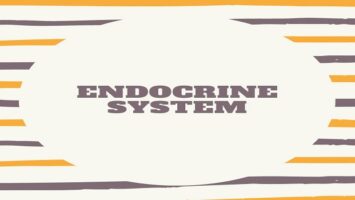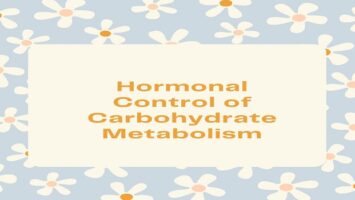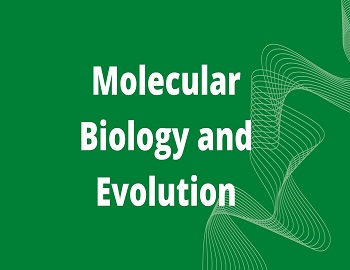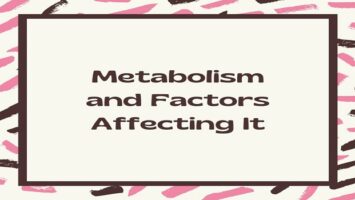Table of Contents
Drug and Alcohol Abuse:
What is addiction?
It is the physical and mental dependence of the body on certain substances like drugs. Initially, people used to take these substances to get mental relaxation and to escape from the realities of life. Generally, they become dependent upon them and they cannot live without their daily use. Thus, addiction to smoking, drinking, and drugs has been found in these persons who are unable to adjust themselves to the stresses and strains of life. However, addiction ultimately leads to several complications like tobacco addiction causes lung and mouth cancer, bronchitis, emphysema, and ulcers. Similarly, drug addiction leads to mental and moral deterioration, convulsions, paralysis, and even death. Anyhow, addiction can be overcome under medical supervision and with the support of society.
Write a self-explanatory note on Cannabinoids:
These are the group of chemicals that interact with cannabinoid receptors present principally in the brain. These are obtained from the flower tops (inflorescence) of the plant Cannabis sativa. The major active component is delta-a-tetrahydrocannabinol or THC. The flower tops, leaves, and the resin of the cannabis plant are used in various combinations to produce marijuana, hashish, charas, and ganja. These are generally taken by inhalation and oral ingestion.
Write a self-explanatory note on Coca Alkaloid or Cocaine:
It is obtained from the coca plant (Erythroxylum coca). It interferes with the transport of the neurotransmitter dopamine. It is commonly called coke or crack which is usually snorted. It has a potent stimulating action on the CNS, producing a sense of euphoria and increased energy. Excessive dosage of cocaine causes lack of sleep, loss of appetite, and hallucination that ultimately leads to damage to mental functions and insanity.
Define drug addiction. Give sources and harmful effects of any three drugs derived from different plant sources.
The prolonged use of drugs may lead to the physical and mental dependence of the body on them. This is called drug addiction. Some people take drugs without any medical advice and soon become drug addicts. These drugs form habits that later on become difficult for a person to get rid of these habit-forming drugs.
| Drug | Source | Harmful Effects |
|---|---|---|
| Cocaine | Cocoa Plant (Erythroxylum coca) | Lack of sleep, loss of appetite, and hallucination ultimately lead to damage to mental functions and insanity. |
| Opium | Capsul of Poppy Plant (Papaver somniferum) | Suppresses brain functions and relieves intense pain. Reduces respiratory and cardiovascular activities and constricts the pupil of the eyes. Reduces anxiety and tension and causes drowsiness and lethargy. |
| LSD | Ergot Fungus (Claviceps) | Chronic psychosis and severe damage to CNS. Also damages chromosomes leading to the production of an abnormal fetus. |
What are opioids? Describe briefly about the various products obtained from opioids.
These are the drugs that are obtained from the exudate of the unripe capsule of the poppy plant (Papaver somniferum). The exudate of these plants is air-dried and is used as opium. Opium is a painkiller drug that acts on the CNS (analgesic) gastrointestinal tract. It is reddish-brown in color and bitter in taste. Opiates reduce anxiety, tension, respiratory activity, and body weight. It also causes constriction of the pupil of the eye and produces nausea, vomiting, and sterility. This opium yields the following alkaloids:
(1) Morphine- It is the main constituent of opium. It is kept in slaked lime and ammonium chloride and then, it is filtered to remove impurities and to obtain morphine. It is a strong analgesic and has a sedative and calming effect. It suppresses brain functions and relieves intense pain during fractures, burns, and surgery. It also causes hyperglycemia, ADH secretion, and constipation. Brown sugar or smack is a diacetyl morphine hydrochloride which is more analgesic than morphine.
(2) Heroin- It is a white odorless, bitter crystalline powder obtained from morphine on acetylation (diacetylmorphine). It is about three times more potent than morphine and is used as a potent painkiller. It is taken by snorting and injection. It reduces anxiety and tension and lowers blood pressure and breathing rate. It also causes drowsiness, reduced vision, loss of weight, AIDS, hepatitis B, and lethargy. It is a semi-synthetic opiate and is also called a smack.
(3) Methadone- It is a synthetic opiate that acts as an analgesic, respiratory depressant, and constipating agent like morphine.
(4) Codeine- It is a natural opiate, that occurs in the form of methyl-morphine. It acts as a mild analgesic and is used as an ingredient in many medicines and cough syrups.
(5) Pethidine (Meperidine)- It is a synthetic opiate and acts somewhat similar to morphine.
Short Note on Drug Abuse:
Narcotics like opium, psychomotor stimulants like cocaine, amphetamine (synthetic analog or adrenaline), caffeine and nicotine, sedatives and antidepressants, alcohol, and hallucinogens like LSD and marijuana are some of the commonly abused psychoactive drugs. These drugs are normally used as medicines to help patients cope with mental illnesses like depression, insomnia, and so on. But when they are taken for a purpose other than their normal clinical use in an amount, then these impair the physical, physiological, and psychological function of the individuals. Then, this condition constitutes the drug abuse.
The drugs of abuse are often taken with alcohol or some common medicines example alcohol or some common medicines example- insulin, aspirin, etc. Such a combined use often increases sedation and, in some cases reduces the effect of medicine or may even cause complications like hypertension.
Symptoms of Drug Addicts:
(1) Drowsiness, disturbances in sleep, pale-looking eyes, irritation, and undue excitement.
(2) Lack of interest in studies and work, increasing demand for money, and being socially inactive.
(3) Loss of weight and appetite, poor memory, weakness, and always looking tired.
Harmful Effects of Tobacco Inhaling:
Tobacco contains nicotine (an alkaloid) which is a powerful toxin. It has a number of effects on the human body. These are:
(1) Nicotine stimulates the adrenal gland to release adrenaline and nor-adrenaline into blood circulation, both of which raise blood pressure and increase heart rate.
(2) It causes lung cancer, bronchitis, emphysema, coronary heart disease, cancer of the urinary bladder and throat, gastric ulcer, etc.
(3) Tobacco chewing causes cancer of the oral cavity.
(4) Smoking increases CO content in blood and reduces the concentration of haembound oxygen. This causes oxygen deficiency in the blood.
From where alcohol is obtained? List its two harmful effects.
Alcohol is obtained by fermentation of cereals or grains using yeast Saccharomyces cerevisiae and distillation of the fermentation broth.
Effects:
(1) Consumption of alcohol results in fatty liver syndrome which leads to cirrhosis where liver cells are replaced by fibrous tissue.
(2) It results in lowering blood sugar levels and thus, it acts as a depressant of CNS.
Give the major effects of the following: Opiates, Amphetamines, LSD, and Barbiturates
Opiates- These include opium, morphine, heroin, pethidine, and methadone which suppress brain functions and relieve intense pain. These reduce anxiety and tension, lower blood pressure and breathing rate, and cause drowsiness and lethargy.
Amphetamines: These drugs are stimulants that increase alertness and work capacity. Its higher doses cause sleeplessness (more wakefulness). These produce feelings of excitement, a sense of well-being, increased self-confidence and flow of ideas, and anorexia.
LSD- LSD stands for Lysergic acid diethyl amide. It is obtained from the Ergot fungus, Claviceps purpurea which is a parasite on grains of rye and cereals. It is a powerful hallucinogen and is always smoked.
Barbiturates- These are the synthetic drugs that act as sedatives. They suppress CNS activity, reduce anxiety, and induce sleep. The consumption of barbiturates with alcohol leads to depressant effects and may result in causing death. Its addiction is difficult to withdraw and its withdrawal shows the symptoms of epilepsy, permanent brain damage, muscular twitching, etc.
What is adolescence? Why are youngsters persuaded to alcohol and drug abuse during adolescence?
Adolescence is the period of rapid growth during which a child becomes mature in terms of his/her attitudes and beliefs for effective participation in society. The period between 12-18 years of age is adolescence and it is a bridge linking childhood and adulthood.
The need for adventure, excitement, and experimentation constitute common causes that motivate youngsters to drug and alcohol use. They first consume drugs or alcohol out of curiosity or experiment but later they start using these to escape from the problems. Media also exposes adolescents to drug and alcohol use as well as stress from pressures to excel in academics also persuades the young to try alcohol and drugs.
Write a short note on “Withdrawl Symptoms”.
The addicts depend largely on drugs and other substances physically and mentally. Whenever these drugs or substances are not available to the addict, then he shows unpleasant “withdrawal symptoms” and these include vomiting, diarrhea, shivering, twitching, perspiration, abdominal, and muscular cramps, etc. Under proper treatment, these symptoms can gradually subside and the body becomes normal.
List some factors that compel people to take drugs.
People generally take drugs on the basis of the following factors:
(1) People take drugs to escape from the realities of life, and to overcome frustrations and depression.
(2) Drugs act as a motivation factor for pleasure, fun, curiosity, adventure and to experience different kinds of awareness.
(3) People consume drugs under the influence of peer groups (social alienation).
(4) People use drugs as a result of apathy arising from race, sex, and age, etc. They start consuming depressants in order to overcome the prophecy of defeat and powerlessness.
(5) They take drugs to do more physical or mental work or to get relief from severe pain.
(6) Family history also acts as a natural stimulant that forces people to take drugs. Psychological alienation also compels people to depend upon drugs in order to avoid the feeling of estrangement and separation from society.
Harmful Effects of Drug and Alcohol Abuse:
(1) Physical Health Problems:
- Addiction: Continued use of drugs or alcohol can lead to addiction, a chronic disease characterized by compulsive drug seeking and use, even in the face of harmful consequences.
- Organ Damage: Substance abuse can damage vital organs, including the liver, heart, brain, and lungs.
- Overdose: Drug overdose can be fatal, and it occurs when a person takes a toxic amount of a substance.
(2) Mental Health Issues:
- Mental Illness: Substance abuse is often linked to mental health disorders such as depression, anxiety, and schizophrenia.
- Cognitive Impairment: Chronic drug and alcohol use can impair cognitive function, leading to memory problems and difficulty concentrating.
(3) Social and Interpersonal Problems:
- Relationship Strain: Substance abuse can strain relationships with family, friends, and colleagues due to erratic behavior, neglect, and conflicts.
- Isolation: People with addiction often withdraw from social activities and isolate themselves.
- Legal Issues: Drug and alcohol abuse can lead to legal problems, including arrests and incarceration.
(4) Economic Consequences:
- Financial Strain: Maintaining a substance abuse habit can be expensive and lead to financial instability.
- Job Loss: Impaired job performance and attendance can result in job loss, contributing to financial problems.
(5) Accidents and Injuries:
- Impaired Judgment: Intoxication impairs judgment and coordination, increasing the risk of accidents, falls, and injuries.
- Traffic Accidents: Driving under the influence of drugs or alcohol is a leading cause of traffic accidents and fatalities.
(6) Family Disruption:
- Child Neglect: Substance abuse can lead to neglect of children and may result in their removal from the home by child protective services.
- Domestic Violence: Substance abuse can contribute to domestic violence within families.
(7) Risk of Infectious Diseases:
- HIV and Hepatitis: Injection drug use, particularly when sharing needles, can increase the risk of HIV and hepatitis transmission.
(8) Increased Risk of Death:
- Premature Death: Substance abuse increases the risk of premature death due to overdose, accidents, and health complications.
(9) Loss of Productivity and Education:
- School and Work Performance: Substance abuse can lead to poor academic and job performance, hindering personal and professional growth.
(10) Stigma and Discrimination:
- People with substance use disorders often face social stigma and discrimination, making it difficult to seek help and support.
Control Measures of Drug and Alcohol Abuse:
(1) Avoid undue Peer Pressure- Every child has its own stamina and personality which should be respected and nurtured. A child should not be pushed unduly to perform beyond his threshold limits.
(2) Education and Counselling- The child should be properly counseled to face problems and stresses and to accept disappointments and failure as part of life.
(3) Seeking help from Parents and Peers- The parents and peers should guide youth and adolescents appropriately in sorting out their problems.
(4) Looking for Danger Signs- Friends and teachers should not hesitate to bring it to the notice of their parents if their wards are consuming drugs or alcohol. Parents should take appropriate measures to diagnose the malady and the underlying causes.
(5) Seeking Professional and Medical Help- A lot of help is available in the form of highly qualified psychologists, psychiatrists, and de-addiction and rehabilitation programmes to help individuals who have unfortunately become drug abusers.









Comments (No)